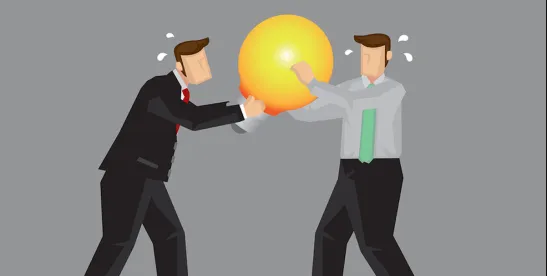The number of patents issuing each year has increased dramatically since the Patent Act of 1952 codified US patent law — from fewer than 50,000 patents issued per year to around 350,000 patents issued per year for the last decade. Yet over the last decade, the number of patent litigations filed has fallen to fewer than 3,500 each year. By any metric, an extremely small percentage of patents are ever asserted. While cost and risk are factors, many patent owners and accused infringers shy away from patent litigation, perhaps due in part to a lack of information about its conduct and resolution. We provide here an introduction and brief overview.
Patent litigation is relatively rare for two good reasons. First of all, it is notoriously expensive, with fees ranging on average from about $1M to almost $5M through trial and appeal, depending on the case value. The cases typically involve broad fact discovery and in-depth expert discovery, as well as highly skilled attorneys and strong court involvement.
Patent litigation is also rare because it’s risky for patent owners. For the courts that commonly address patent disputes, patent challengers win on average about 75% of the time, e.g., by demonstrating non-infringement or invalidating patent claims. Patent claims can be invalidated in the court proceeding, but this has happened in only about 13% of cases filed over the last decade. Patent claims are, however, often challenged in parallel proceedings at the Patent Office’s Patent Trial and Appeal Board (PTAB), where about 33% of all challenged claims currently end up being cancelled.
Despite the costs and the risks, patent litigation is not – as many may think – akin to boarding a runaway train. For patent cases filed over the last decade and concluded, there are clear wins and losses in less than 25% of them. Some are resolved or terminated on other bases, but the clear majority — at least 55% of them — are resolved by settlement between the parties. Thus, patent litigation frequently serves as a mechanism for parties to spar and evaluate the patent rights, as well as each other, prior to making potentially high-value business decisions.
So, what do potential litigants – including patent owners and possible patent infringers – need to know about the process of US patent litigation? Understanding the stages involved in the litigation process is essential and they are discussed here. Understanding the various opportunities those stages can present for resolution is discussed in Part II of this series.

The primary stages of patent litigation are shown in the diagram above. As noted above, the majority of cases are settled and many dismissed, so only a small percentage (usually less than 5%) of cases progress all the way through trial. For the sake of completeness, we describe all the stages generally and in pertinent aspect as follows (taking them in the order shown in the diagram):
- For patent owners, the process begins with a pre-suit investigation. An attorney must assess the merits of the infringement claims. In some situations, the patent owner may notify the alleged infringer before commencing litigation, either to start the accrual of damages or with hopes of settling the dispute.
- The actual litigation commences with the filing of a complaint. The complaint must be served on US defendants within 90 days of its filing. Once served, a defendant has 21 days to either (i) move to dismiss the claims or (ii) respond to the allegations in a so-called “answer.” Defendants usually negotiate an extension of this deadline. If the defendant moves to dismiss, it need not answer until its motion is addressed by the court. If and when a defend responds to a complaint, it can assert claims of its own, called “counter-claims,” and the patent owner must then answer those allegations.
- Once a complaint is filed, and usually after it has been served, the court will set a date for the initial case management conference. The parties must meet-and-confer in advance of this date about the scope of the case, procedures for handling digital and confidential information, and the schedule. They must make certified disclosures about likely witnesses and information to be discovered as part of the litigation. At the conference, the judge is introduced to the case and thereafter sets the schedule.
- Patent Local Rules are used in many courts that commonly hear patent cases. They set forth specific requirements for disclosure of patent related contentions and the process for construing the meaning of the patent claims. These disclosures are made early in the fact discovery period and the process of claim construction is usually completed within a year of the filing of the complaint and before the close of discovery.
- The longest and most expensive stage (other than trial) is fact discovery – the process by which each side demands production or provision of certain information from the other side. This process can begin after the parties meet-and-confer to discuss the case set-up and often lasts a year or more. The parties present written discovery requests, which can then be disputed, but eventually each side will produce many documents, including emails of key people, and answer so-called interrogatories. Each side will then conduct depositions of key people and, for companies, on identified topics for which the company must designate and prepare a witness.
- Once the period for fact discovery ends, there is a period of expert discovery. Experts provide reports in which they state their opinions on the merits and explain the bases for those opinions. It is typical for each party to have one or more “technical” experts opining on patent infringement and validity as well as a specialized expert opining on damages. Each expert is deposed and questioned about the opinions expressed in their report.
- Once fact and expert discovery is concluded, and sometimes much earlier, the parties may present issues for decision by the judge rather than a jury – i.e. for “summary judgment.” Such issues must be matters of law, without underlying factual disputes, to be resolved at this stage. The identification and briefing of such issues is demanding, but this process can narrow the disputed issues significantly.
- The parties will thereafter begin preparations for trial. This includes identifying factual evidence to be admitting, debating the admissibility of key evidence and expert opinions, and drafting instructions for the jury, all of which are addressed by the Court in a pre-trial conference. This also includes preparing questions and materials for all the witnesses who will appear and testify.
- Patent trials typically last 1 – 2 weeks, but can be shorter or longer. This stage involves a full team of attorneys and support staff, who generally work day-and-night, and both fact and expert witnesses. After closing arguments, the jury retires to deliberate for as long as needed until, if possible, it reaches a decision and issues its verdict.
- After the jury issues its verdict, there is usually additional briefing that challenges the outcome on various legal grounds. Once the court enters the final decision, the case may be appealed to the Federal Circuit Court, which can affirm or change the decision and which may, in some cases, remand the case to the court for further litigation.
Understanding these stages of patent litigation can help litigants understand why patent litigation is expensive and how it can be used to manage risks. For example, the stage of fact discovery is expensive (at least in part) because of broad demands for discovery and resistance to producing requested information, which fosters costly discovery disputes and makes the process inefficient. But as will be discussed in an upcoming blog, discovery of key information and/or a Court’s early decisions regarding claim construction can help the parties assess the risks and position the case for settlement. Resolution or settlement may be possible at any of these stages. Litigants who understand the process of patent litigation will be best positioned to work with their litigation counsel to control the costs and the risks, and to use patent litigation to achieve their business goals.




 />i
/>i
